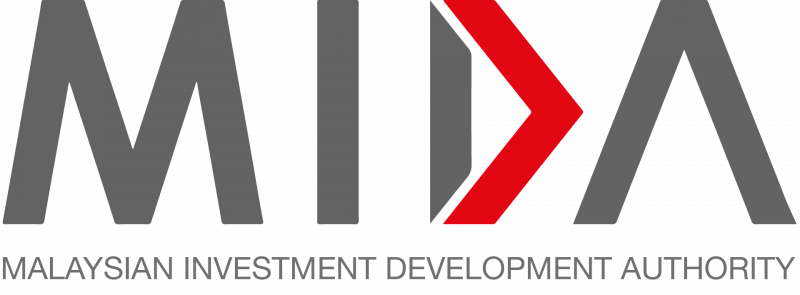Malaysia needs to ship RM1.2 trillion worth of semiconductor exports by 2030 to maintain its position as the sixth largest exporter in the world.
Malaysia Semiconductor Industry Association president Datuk Seri Wong Siew Hai said that achieving such a significant increase will demand concerted efforts across various facets of the semiconductor value chain.
He highlighted that this goal represents a compound annual growth rate of about 7.6% from the current export value.
“To achieve this growth, Malaysia will need to focus on improving its capabilities across the semiconductor value chain, including advanced packaging, integrated circuit (IC) design, and smart manufacturing,” he said in a fireside chat at Tech in Asia Conference 2024 recently.
Wong stressed the necessity for collaboration between the government and the industry to tackle existing challenges, particularly talent shortage, attracting foreign investment and supporting the development of local semiconductor companies and ecosystems.
He said: “300,000 technical talents and engineers are needed in the sector, which the government and industry will need to work together to attract, train, and retain more local talent through initiatives like scholarships, cross-disciplinary training programmes, and collaborations with universities.”
The government, Wong said, needs to allow the strategy of using other countries’ talent in bridging the gap of the industry’s talent shortages. “The government should try to get all foreigners who study in Malaysia, especially in science and engineering, to continue working in Malaysia. This is under consideration and MSIA is hopeful to hear some positive news.”
He added that attracting foreign direct investment from multinational semiconductor companies is crucial for driving technology transfer and bolstering the local ecosystem. This may require offering competitive incentives and reducing barriers to entry to make Malaysia a more appealing destination for such investments.
Wong pointed out that the government’s National Semiconductor Strategy aims to nurture 10 Malaysian companies in advanced packaging and IC design.
“Providing funding, mentorship, and other support for local startups and small and medium enterprises will be essential in building a stronger indigenous semiconductor industry. Such measures are critical for fostering innovation and ensuring the industry’s sustainability.
“As for improving productivity and automation, upgrading manufacturing capabilities through smart automation and Industry 4.0 technologies will be key to enhancing productivity and competitiveness in the semiconductor industry.”
Adopting these advanced technologies will help streamline processes and reduce costs, making Malaysian semiconductor products more competitive on the global stage, Wong said.
“The government should continue to position Malaysia as an attractive alternative manufacturing hub for advanced semiconductor products. This strategic positioning is crucial as multinational companies seek to diversify their supply chains in response to global uncertainties.”
He expressed optimism about Malaysia’s potential to solidify its position as a leading semiconductor manufacturing hub. “With the right policies, investments, and collaborative efforts, Malaysia has the potential to achieve its ambitious growth targets for the industry,” Wong said.Malaysia needs to ship RM1.2 trillion worth of semiconductor exports by 2030 to maintain its position as the sixth largest exporter in the world.
Malaysia Semiconductor Industry Association president Datuk Seri Wong Siew Hai said that achieving such a significant increase will demand concerted efforts across various facets of the semiconductor value chain.
He highlighted that this goal represents a compound annual growth rate of about 7.6% from the current export value.
“To achieve this growth, Malaysia will need to focus on improving its capabilities across the semiconductor value chain, including advanced packaging, integrated circuit (IC) design, and smart manufacturing,” he said in a fireside chat at Tech in Asia Conference 2024 recently.
Wong stressed the necessity for collaboration between the government and the industry to tackle existing challenges, particularly talent shortage, attracting foreign investment and supporting the development of local semiconductor companies and ecosystems.
He said: “300,000 technical talents and engineers are needed in the sector, which the government and industry will need to work together to attract, train, and retain more local talent through initiatives like scholarships, cross-disciplinary training programmes, and collaborations with universities.”
The government, Wong said, needs to allow the strategy of using other countries’ talent in bridging the gap of the industry’s talent shortages. “The government should try to get all foreigners who study in Malaysia, especially in science and engineering, to continue working in Malaysia. This is under consideration and MSIA is hopeful to hear some positive news.”
He added that attracting foreign direct investment from multinational semiconductor companies is crucial for driving technology transfer and bolstering the local ecosystem. This may require offering competitive incentives and reducing barriers to entry to make Malaysia a more appealing destination for such investments.
Wong pointed out that the government’s National Semiconductor Strategy aims to nurture 10 Malaysian companies in advanced packaging and IC design.
“Providing funding, mentorship, and other support for local startups and small and medium enterprises will be essential in building a stronger indigenous semiconductor industry. Such measures are critical for fostering innovation and ensuring the industry’s sustainability.
“As for improving productivity and automation, upgrading manufacturing capabilities through smart automation and Industry 4.0 technologies will be key to enhancing productivity and competitiveness in the semiconductor industry.”
Adopting these advanced technologies will help streamline processes and reduce costs, making Malaysian semiconductor products more competitive on the global stage, Wong said.
“The government should continue to position Malaysia as an attractive alternative manufacturing hub for advanced semiconductor products. This strategic positioning is crucial as multinational companies seek to diversify their supply chains in response to global uncertainties.”
He expressed optimism about Malaysia’s potential to solidify its position as a leading semiconductor manufacturing hub. “With the right policies, investments, and collaborative efforts, Malaysia has the potential to achieve its ambitious growth targets for the industry,” Wong said.
Source: The Sun
MSIA president: Malaysia must enhance capabilities across semiconductor value chain
Content Type:
Duration:


